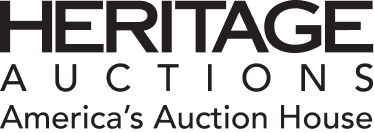LOT #47004 |
Sold on Dec 1, 2022 for: Sign-in
or Join (free & quick)
Set of Ten Demonstration Geissler or Crookes Tubes. Circa 1860s....
Click the image to load the highest resolution version.
Sold on Dec 1, 2022 for:
$781.25
Bid Source: HA.com/Live bidder
Get one of these:
Explore Available Items
Description
An Extremely Rare and Beautiful Early Set of Geissler Demonstration Tubes
Set of Ten Demonstration Geissler or Crookes Tubes.
Circa 1860s. This set of demonstration Geissler Tubes is
comprised of ten glass tubes numbered 1-8 and 10-11 and measuring
18.5 inches to 29 inches long; varying widths and shapes, some with
chambers filled with mineral powder or double-walled. Each tube
(except numbers 2 and 6) with a manuscript paper label at the left
end with a corresponding paper label where the tube belongs in the
case. Housed in a two-tier pine case with velvet lined tube
fittings. All tubes 1-8 and 10 are presumed to retain their seal
and the lot includes six print color photographs of the tubes
connected to an induction coil, demonstrating the glowing effect in
action. The photographs date from 1985, when the letter from the
Science Museum of South Kensington was written. Lacking tube number
9.Though these particular tubes predate Crookes' work, they are often named synonymously with Heinrich Geissler's earlier work with gas discharge tubes. Geissler, a noted glassblower and physicist, developed these tubes to demonstrate electrical glow discharge, similar to modern neon lighting, as early as 1864. William Crookes would later continue and expand this research in the late 1870s, developing improved vacuum technology and the precursors to the x-ray and tv tubes. This particular set comes from the Early Technology Collection of Michael Bennett-Levy; he notes in the original 2009 auction listing: "This set of discharge tubes are amongst the earliest examples known to exist anywhere. Keele University listed them pre-1865 and the Science Museum, while not confirming this, agreed that this was quite possibly right - see letters [below]. The quality of these tubes is extraordinary as they still hold their vacuum over 140 years after they were made. It is worth pointing out that these tubes predate the invention of the electric light by more than a decade."
[Together with:] Typed letter signed to Professor P.H. Plesch of the University of Keele (Department of Chemistry) from the Science Museum of South Kensington, dated January 8, 1985. The University offers some context for the likely history of this set, mentioning that it was presumably a "lecturer's demonstration set" based on the case and lack of trade labels, and documenting a list of what can be identified about each tube. Brown, the curator of the Electricity and Magnetism Collection, notes that all tubes except for number 11 "are still evacuated and give a good discharge when a Tesla coil is applied. What quality of workmanship!"
Condition: Darkening to the end of some tubes. Minor soiling and wear. Paper labels with minor scattered soiling and dampstaining. Box rubbed and worn with scattered soiling, paper label chiefly lost, horizontal crack the length of the lid. Handle of first tier of the case is broken. Accompanying letter with minor edgewear, two hole punches and a pencil notation to the top margin, and creased closed tears to the left and top margins.
References: Mills, J., Encyclopedia of Antique Scientific Instruments, pages 94-95.
Provenance: Michael Bennett-Levy Early Technology Collection; Bonhams, September 30, 2009, lot 551.
Auction Info
2022 December 1 Historical Platinum Session Signature® Auction #6267 (go to Auction Home page)
Auction Dates
December, 2022
1st
Thursday
Bids + Registered Phone Bidders: 1
Lot Tracking Activity: N/A
Page Views: 385
Buyer's Premium per Lot:
25% on the first $300,000 (minimum $49), plus 20% of any amount between $300,000 and $3,000,000, plus 15% of any amount over $3,000,000 per lot.
Shipping, Taxes, Terms and Bidding
Charges to be determined based on Actual Shipping Costs incurred. Note: Additional invoice may follow original. Please contact us for more information. Sales Tax information
Terms and Conditions | Bidding Guidelines and Bid Increments | Glossary of Terms
Charges to be determined based on Actual Shipping Costs incurred. Note: Additional invoice may follow original. Please contact us for more information. Sales Tax information
Important information concerning Sales Tax and Resale Certificates. Learn More
Terms and Conditions | Bidding Guidelines and Bid Increments | Glossary of Terms
